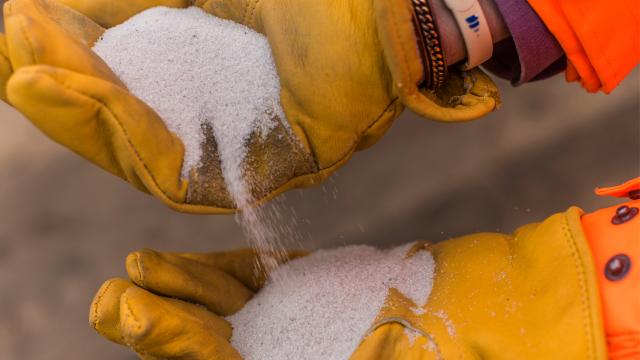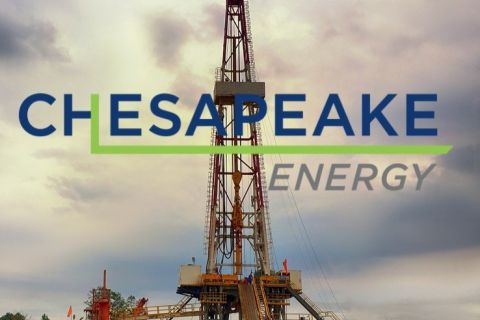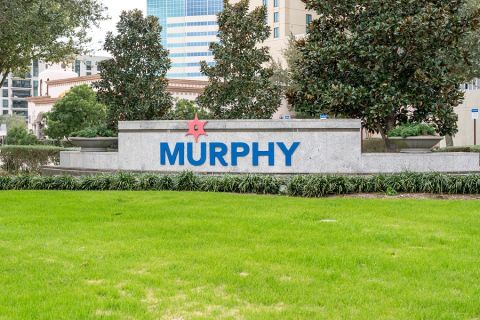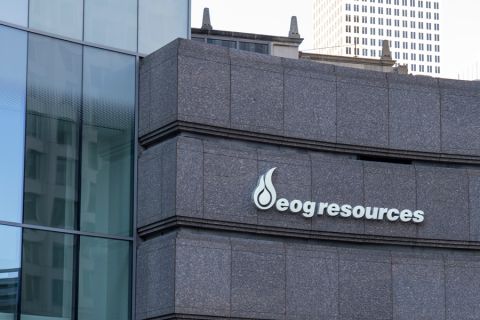
MIDLAND, Texas—“It’s not been fully appreciated that there are big differences in the quality of frac sands and how it affects production,” said Bud Brigham, chairman of Atlas Sand Co. and its parent company Brigham Exploration, during the Executive Oil Conference held recently in Midland, Texas.
Brigham Exploration’s background in the southern Permian Basin began in 2006 when it began buying acreage. The company is still active in the play and made additional Permian Basin acquisitions in 2018.
Atlas Sand, which was formed by Brigham in 2018, gets its sand from the Giant Open Dunes Sand Pit that is north-northeast of Monahans, Texas. According to Bud Brigham, the company has the highest quality sand for Permian Basin operators.
“They don’t have the organics, they don’t have the soil development or pedogenesis and all the impurities that are associated with buried deposits and it’s not just there at the surface, it’s at depth,” he told the audience.
The dunes in the Winkler Sand Trend have been there for tens of thousands of years and have continued from Mother Nature’s winnowing processes. The sands have been deposited in the giant dune primarily over the recent 20,000-year climate oscillation. The off-dune deposits were deposited more than 300,000 to 1 million years ago.
“The problem with the older sand is that it’s been buried and there has been a lot of soil development and significant pedogenesis and variability” Brigham said.
The advantage of using these sands (Permian 40/70 or 100 mesh) is that better quality crush performance stays stronger for longer and can compete with alternative sand sources.
“I can tell you that a big part of our success was eliminating variables such as sand quality, and that’s how we could drive improvements and efficiencies and get higher margins,” Brigham said.
Good, Fast, Cheap
Dena Demboski, vice president of drilling and completions at UpCurve Energy, took the stage following Brigham and described her company’s operations in the Reeves County-Delaware Basin prospects, which include extended-reach Wolfcamp wells that include multiwell zipper pad operations.
UpCurve’s acreage is surrounded by several other operators including Colgate, Tall City and Centennial. The three companies all drilled wells in July.
“We planned all of our operations around each other for the best interest of all of us to make good wells and play nice in the sandbox,” she said.
“We have 9,000 contiguous net acres across Blocks 72 and C-8 in the county and are position-optimized for high-working interest wells with majority 2-mile laterals. We have 14 horizontal wells online that are producing more than 10,000 barrels of oil per day,” she continued.
“We are focused on deploying growth capital and to add to our position or to build a new position. Our approaches to developing Permian benches are good, fast, cheap—pick two. That reminds us that every project we take on, we have to be mindful of our neighbors including wells and offset operators surrounding you.”
Most of the wells that UpCurve has completed are Upper and Lower Wolfcamp A, B and C, as well as some Bone Springs producers.
Focused On Completions
President and CEO of GR Energy Services, Wayne Richards, followed saying his company is “really focused on completions, production and water management in the basin.”
The private services company noted the efficiency gains made in the basin using long laterals and optimized completion designs, more stage per well and more clusters per stages including zipper fracs for multistage and multiwell operations
“We’re doing more with less—with lower oil and gas prices and it is incumbent on us, particularly in the service industry, to do all we can to maximize that opportunity ,” he said.
The company has developed a “Zip Intervention Platform” that, according to Richards, has a reliable and versatile perforating system.
“It includes preassembled downhole perf guns, customizable gun lengths, phasing and shot density. The system decreases plug-and-perf operating time and we’ve had efficiency gains of up to 50%, not to mention the improved well site safety.”
The amount of produced water in the basin is, according to the speaker, expected to grow 20% to about 10 billion barrels per day by 2022.
“We’re going to have a lot of stress on the system. If you look at the slowdown in the salt water disposal wells, we’re going to need significant infrastructure growth to manage the increasing water volumes,” he said.
GR Energy has developed a mobile pumping station and system called the Flex Flow System. The trailer-mounted system with 100 hp to 500 hp that can be used to transfer water with a centrifugal pump in a variety of production operations including a stop-gap for operators to commission salt water disposal wells rather than waiting on permanent equipment to be delivered. The mobile pumping stations can be used to develop an injectivity profile to test the disposal wells for their capability.
Recommended Reading
Chesapeake Slashing Drilling Activity, Output Amid Low NatGas Prices
2024-02-20 - With natural gas markets still oversupplied and commodity prices low, gas producer Chesapeake Energy plans to start cutting rigs and frac crews in March.
Buffett: ‘No Interest’ in Occidental Takeover, Praises 'Hallelujah!' Shale
2024-02-27 - Berkshire Hathaway’s Warren Buffett added that the U.S. electric power situation is “ominous.”
Murphy Oil Names Eric Hambly as President, COO
2024-02-08 - Murphy Oil has promoted Eric M. Hambly to president and COO and E. Ted Botner to executive vice president. Both will continue to report to CEO Roger W. Jenkins.
EOG Resources Wildcatting Veteran Billy Helms to Retire
2024-04-02 - Joining an EOG Resources predecessor in 1981, Helms is among the pre-1986-oil-bust generation who later found success in shale.
TPG Adds Lebovitz as Head of Infrastructure for Climate Investing Platform
2024-02-07 - TPG Rise Climate was launched in 2021 to make investments across asset classes in climate solutions globally.





